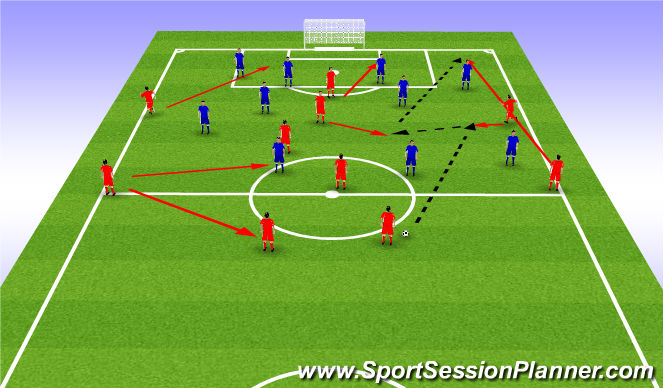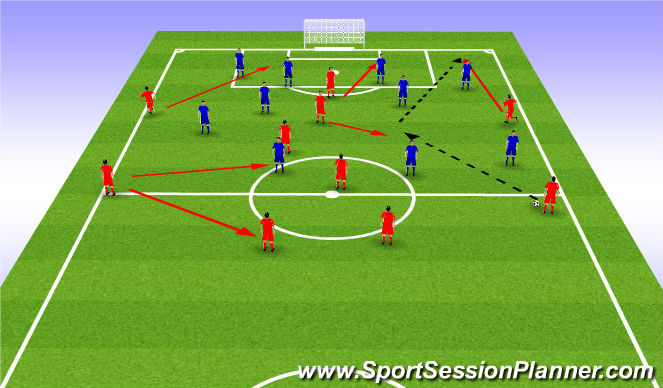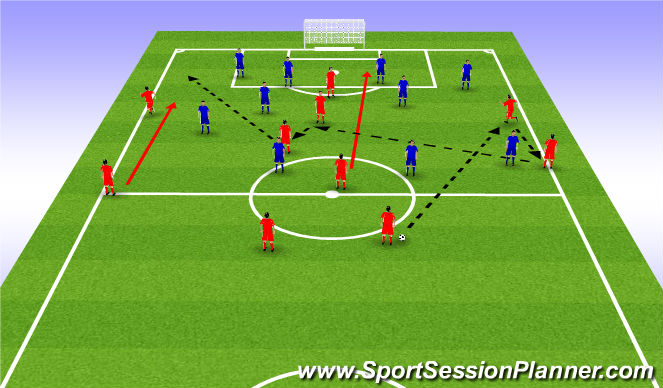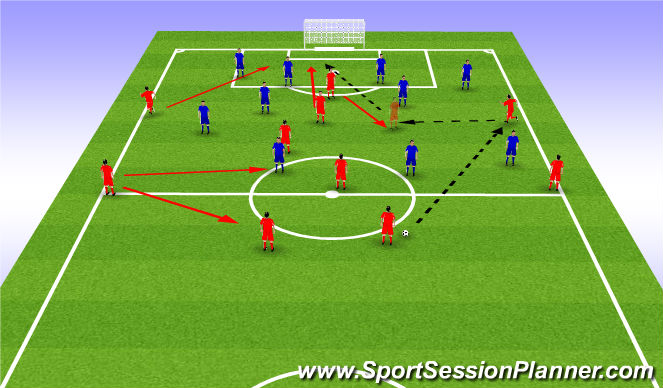Football/Soccer Session (Advanced): Attacking Patterns of Play
Profile Summary

| Name: | Joe Tinker |
|---|---|
| City: | Leicester |
| Country: | United Kingdom |
| Membership: | Adult Member |
| Sport: | Football/Soccer |

See the guidance at the top of this page to understand why you are not seeing interactive Football/Soccer images.

Pattern 2
The ball starts with #5/6 or #4 and is played wide to #7/11 who drives in off the line to meet the ball, this is the trigger for #2/3 to overlap.
#10 moves away and drops in to receive the pass, facing forwards and plays in the overlapping FB. #9 makes a diagonal run towards the front post, #10 tries to drag away the second CB and the opposite winger #7/11 makes a run between the FB and CB.
Opposite FB tucks across to make a back 3 or tucks in to compact the midfield.

See the guidance at the top of this page to understand why you are not seeing interactive Football/Soccer images.

Pattern 3
Ball with #2/3, movement from #10 to drop in, or #9 rotates and does this job. If the player is not under pressure and can turn then #7/11 has to read the play and recognise this is their opportunity to make a run in behind for a 1st time pass round the corner.
If the player is under pressure and cannot receive the pass facing forward the ball can be dropped to #4/8 to play the pass wide OR the ball can be recycled to the other FB for the pattern to be restarted.

See the guidance at the top of this page to understand why you are not seeing interactive Football/Soccer images.

Pattern 4
Ball starts with #5/6 and is set to #7/11 who is under pressure to set back to #2/3. Movement from #10 who comes in to receive the pass and #8 or #4 makes the move to receive the set. The decision from #10 is now which player is in the best position to retain possession.
The ball is then switched to opposite winger, with opposite CM making a forward run. The CM who plays the ball wide then sits (in this diagram #8 switching and sitting and #4 making the run).
It is important to play what you see! If the ball is with #10 and he can turn then he can play Pattern 1, 2 or 3. If he sets back to #4/8 and the opposition slide across the ball can go back out to the channel is came from (in this diagram ball could be played back out to #7 who has made a forward run).
The opposite full back must recognise when to tuck in as a back 3, when to push into midfield and when to support the play.








 Play animation
Play animation Play step-by-step
Play step-by-step Repeat (toggle)
Repeat (toggle) Full Screen
Full Screen Pause
Pause Stop
Stop
Pattern 1
Ball with #5/6, played in to #7/11. As the ball travels #9 drops in and #10 rotates with #7/11 making a run between opposition FB and CB.
The ball is played into #9 who has picked up the CAM position and the ball is threaded through centrally. This can be a straight pass for #10 or a diagonal pass for #7/11 who has narrowed up.
Opposite FB tucks across to make a back 3 or tucks in to compact the midfield.